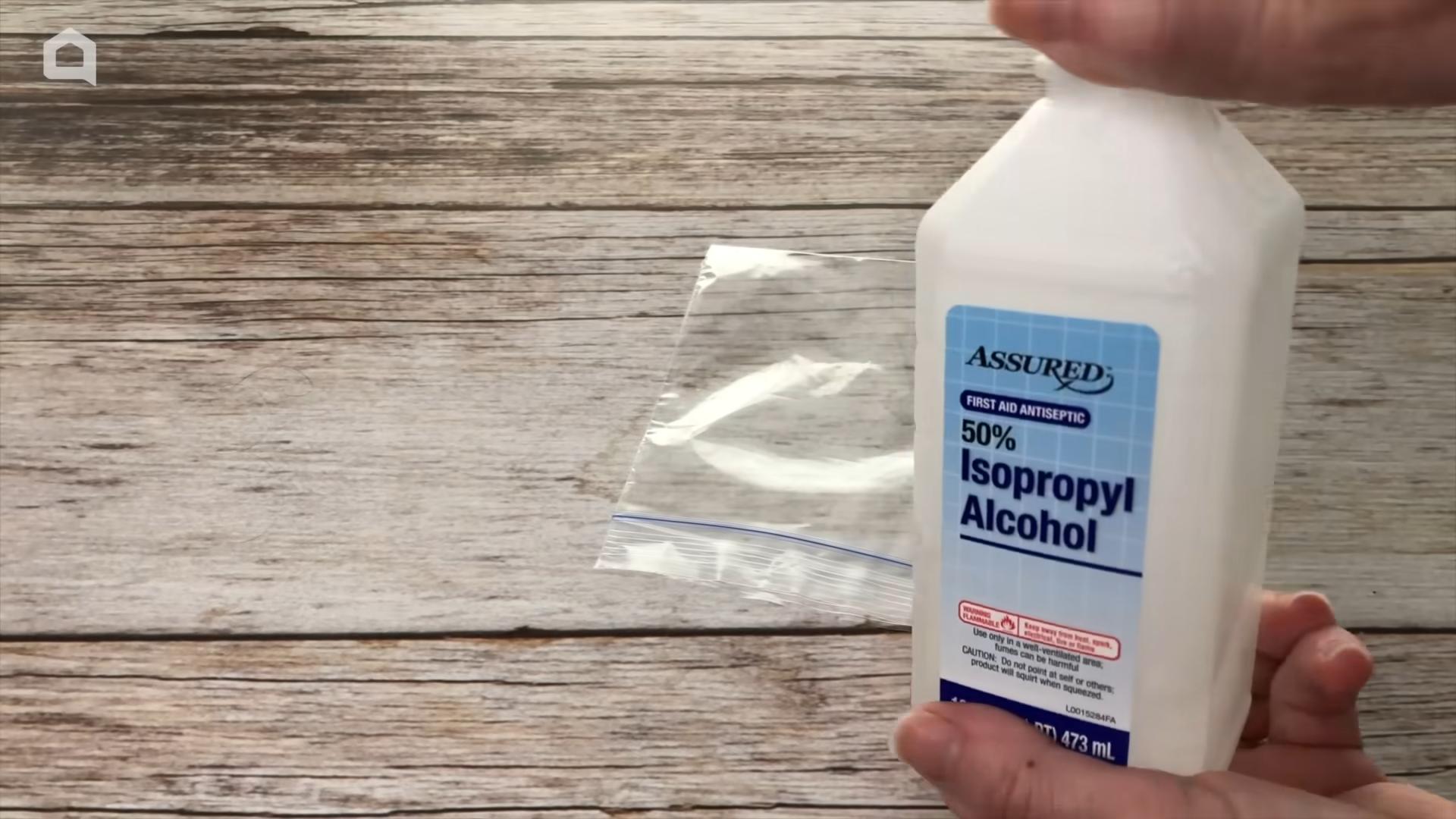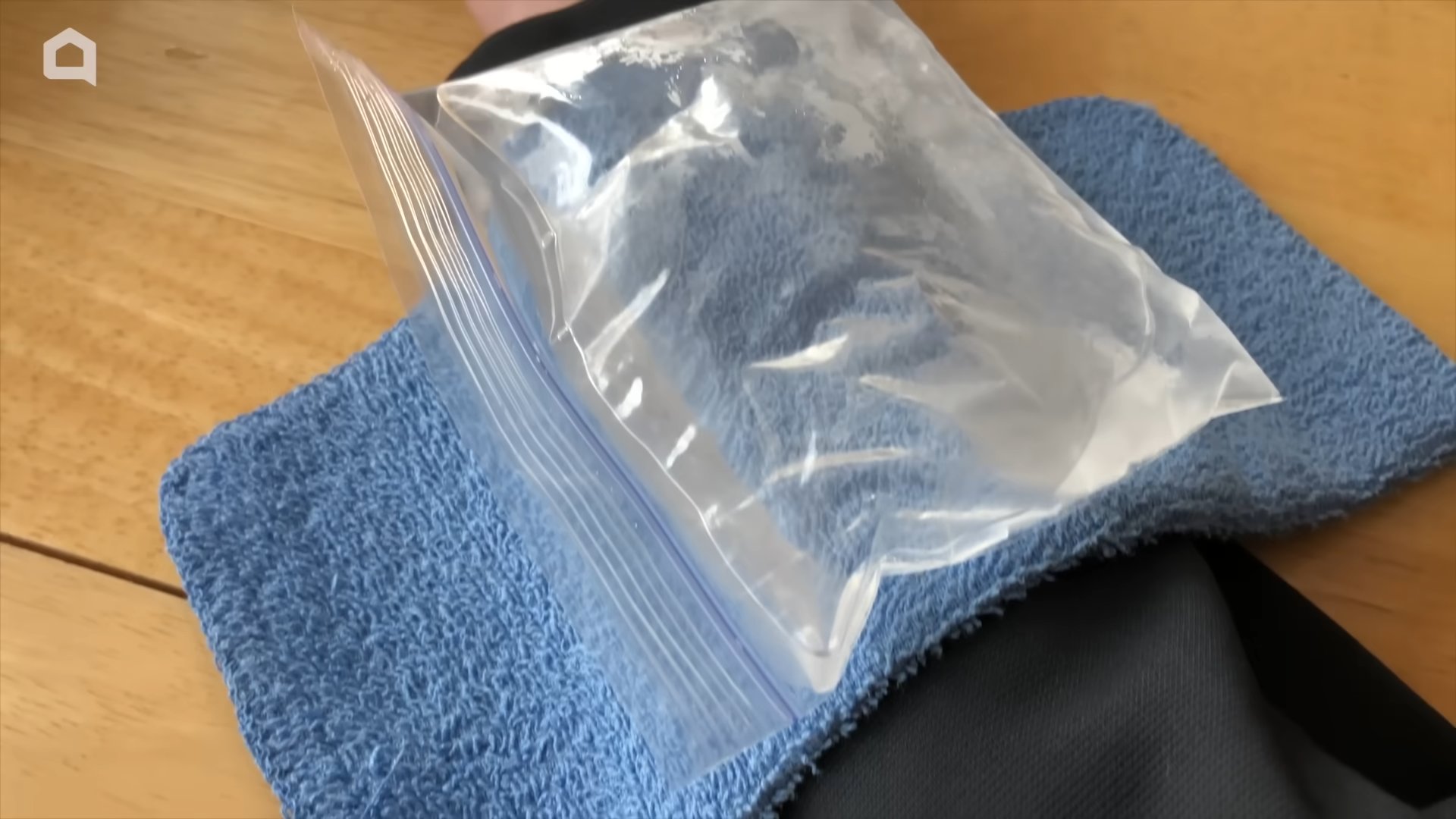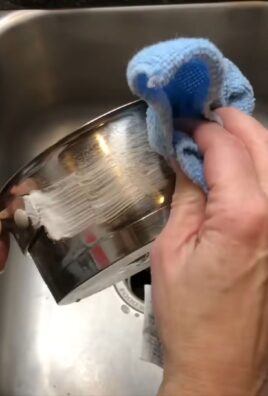Ziplock bag hacks are about to revolutionize your gardening game! Forget expensive seed starters and complicated propagation methods. I’m here to show you how these everyday kitchen staples can become your secret weapon for a thriving garden, all while saving you time and money.
For generations, resourceful gardeners have sought innovative ways to nurture their plants. While we might not think of ziplock bags as having a rich history, the spirit of ingenuity they represent – finding simple solutions to complex problems – is as old as gardening itself. From ancient Egyptians using clay pots to modern-day gardeners repurposing plastic containers, the quest for efficient and affordable gardening techniques continues.
Why do you need these ziplock bag hacks? Because gardening shouldn’t be intimidating or break the bank! Whether you’re a seasoned green thumb or just starting out, these tricks will simplify everything from seed germination to pest control. Imagine effortlessly starting seeds indoors, creating mini-greenhouses for delicate seedlings, or even protecting your precious tomatoes from hungry critters – all with the help of a humble ziplock bag. I’m excited to share these simple yet effective methods that will make your gardening journey easier and more rewarding. Let’s get started!

Unlock the Potential: Amazing Ziplock Bag Hacks You Need to Know!
Hey there, fellow DIY enthusiasts! I’m always on the lookout for clever ways to simplify life, and let me tell you, the humble Ziplock bag is a total game-changer. Forget just storing leftovers – these versatile bags can be used for so much more! I’m going to share some of my favorite Ziplock bag hacks that will save you time, money, and a whole lot of hassle. Get ready to be amazed!
Freezer Meal Prep Made Easy
One of my absolute favorite uses for Ziplock bags is freezer meal prep. It’s a lifesaver on busy weeknights!
* Benefits: Saves time, reduces food waste, allows for healthy eating even when you’re short on time.
* Best Types of Bags: Freezer bags (they’re thicker and more durable).
* Foods That Freeze Well: Soups, stews, chili, casseroles, pre-cut vegetables, marinated meats.
Step-by-Step Instructions:
1. Choose Your Recipes: Start by selecting recipes that freeze well. Think hearty soups, flavorful stews, or even pre-portioned smoothie ingredients. I usually plan out a week’s worth of meals at a time.
2. Gather Your Ingredients: Chop all your veggies, measure out your spices, and prepare any sauces or marinades. Having everything prepped and ready to go makes the whole process much faster.
3. Assemble Your Bags: Label each bag clearly with the recipe name, date, and cooking instructions. This is crucial so you don’t end up with a mystery meal later!
4. Fill the Bags: Add all the ingredients to the Ziplock bag, making sure to remove as much air as possible before sealing. Lay the bag flat to freeze, which will help it freeze faster and save space in your freezer.
5. Freeze and Enjoy: Once frozen solid, you can stack the bags neatly in your freezer. When you’re ready to cook, simply thaw the bag in the refrigerator overnight or use the defrost setting on your microwave.
DIY Piping Bags for Cake Decorating
Don’t have fancy piping bags? No problem! Ziplock bags to the rescue!
* Benefits: Cost-effective, easy to use, disposable (less cleanup!).
* Best Types of Bags: Quart-sized bags work well for most decorating projects.
* Ideal for: Frosting cupcakes, decorating cookies, adding small details to cakes.
Step-by-Step Instructions:
1. Prepare Your Frosting: Make sure your frosting is smooth and free of any lumps.
2. Fill the Bag: Spoon the frosting into the Ziplock bag, filling it about halfway full.
3. Remove Air: Twist the top of the bag to remove any air bubbles and create a tight seal.
4. Snip the Corner: Using scissors, carefully snip off a small corner of the bag. The size of the opening will determine the thickness of the frosting line. Start small – you can always make it bigger!
5. Decorate Away: Squeeze the bag gently to pipe the frosting onto your cake, cupcakes, or cookies. Practice on a piece of parchment paper first to get the hang of it.
6. Optional: Use a Piping Tip: For more intricate designs, you can insert a piping tip into the corner of the bag before snipping it. Just make sure the opening is large enough for the tip to fit snugly.
Marinating Magic: Flavor Infusion Made Simple
Marinating meat in a Ziplock bag is a game-changer. It’s mess-free and ensures even coverage.
* Benefits: Even marinade distribution, less mess, easy to store in the refrigerator.
* Best Types of Bags: Gallon-sized bags are perfect for larger cuts of meat.
* Ideal for: Chicken, steak, pork, fish.
Step-by-Step Instructions:
1. Prepare Your Marinade: Whisk together your favorite marinade ingredients in a bowl.
2. Place Meat in Bag: Put the meat in the Ziplock bag.
3. Pour in Marinade: Pour the marinade over the meat, making sure it’s evenly coated.
4. Remove Air: Squeeze out as much air as possible before sealing the bag.
5. Massage the Meat: Gently massage the bag to ensure the marinade penetrates the meat.
6. Refrigerate: Place the bag in the refrigerator for at least 30 minutes, or up to overnight, turning occasionally to ensure even marination.
7. Cook and Enjoy: Remove the meat from the bag and cook according to your recipe. Discard the marinade.
Travel Hacks: Organization and Protection
Ziplock bags are my secret weapon for staying organized and protecting my belongings when I travel.
* Benefits: Keeps items organized, protects against leaks and spills, saves space.
* Best Types of Bags: Variety of sizes, from snack-sized to gallon-sized.
* Ideal for: Toiletries, electronics, snacks, dirty clothes, shoes.
Step-by-Step Instructions:
1. Toiletries: Place all your toiletries in Ziplock bags to prevent leaks from ruining your clothes. I like to use quart-sized bags for individual items and a gallon-sized bag for all my toiletries together.
2. Electronics: Protect your phone, camera, and other electronics from water damage by storing them in Ziplock bags.
3. Snacks: Pack snacks in Ziplock bags for easy access on the go. This is especially helpful for road trips or flights.
4. Dirty Clothes: Keep your clean clothes separate from your dirty clothes by storing the dirty ones in a Ziplock bag. This also helps to contain any odors.
5. Shoes: Pack your shoes in Ziplock bags to prevent them from getting your clothes dirty.
Emergency Ice Pack
Need a quick ice pack? A Ziplock bag filled with ice and water works wonders!
* Benefits: Readily available, customizable, disposable.
* Best Types of Bags: Freezer bags are the most durable.
* Ideal for: Minor injuries, headaches, swelling.
Step-by-Step Instructions:
1. Fill the Bag: Fill a Ziplock bag with ice and a small amount of water. The water helps the ice conform to the body.
2. Seal Tightly: Make sure the bag is sealed tightly to prevent leaks.
3. Wrap in Cloth: Wrap the bag in a thin cloth or towel to protect your skin from frostbite.
4. Apply to Injury: Apply the ice pack to the injured area for 15-20 minutes at a time.
DIY Vacuum Sealer (Sort Of!)
While not a true vacuum sealer, this trick helps remove excess air from bags, extending the shelf life of food.
* Benefits: Extends shelf life, prevents freezer burn, saves space.
* Best Types of Bags: Freezer bags are recommended.
* Ideal for: Storing leftovers, freezing fruits and vegetables.
Step-by-Step Instructions:
1. Fill the Bag: Place the food you want to store in a Ziplock bag.
2. Seal Partially: Seal the bag almost completely, leaving a small opening at one corner.
3. Submerge in Water: Slowly lower the bag into a bowl of water, making sure the opening stays above the water line. The water pressure will force the air out of the bag.
4. Seal Completely: Once most of the air is out, seal the bag completely.
5. Store: Store the bag in the refrigerator or freezer.
Protecting Important Documents
Keep your important documents safe from water damage and spills by storing them in Ziplock bags.
* Benefits: Protects against water damage, keeps documents organized, easy to store.
* Best Types of Bags: Gallon-sized bags are perfect for larger documents.
* Ideal for: Birth certificates, passports, social security cards, insurance policies.
Step-by-Step Instructions:
1. Gather Documents: Collect all the important documents you want to protect.
2. Place in Bag: Place the documents in a Ziplock bag.
3. Seal Tightly: Make sure the bag is sealed tightly to prevent water from entering.
4. Store in Safe Place: Store the bag in a safe place, such as a fireproof safe or a waterproof container.
Phone Protection at the Beach or Pool
Worried about your phone getting wet at the beach or pool? A Ziplock bag provides a simple and effective waterproof

Conclusion
So, there you have it! Transforming ordinary Ziplock bags into extraordinary tools is not just a clever trick; it’s a game-changer for organization, food preservation, and even creative projects. We’ve explored a range of innovative uses, proving that these humble bags are far more versatile than you might have initially thought. From creating makeshift piping bags for elegant cake decorating to vacuum-sealing leftovers for extended freshness, the possibilities are truly endless.
But why is this DIY approach a must-try? Simply put, it’s about maximizing value and minimizing waste. Instead of constantly purchasing specialized tools or containers, you can leverage something you likely already have in your kitchen. It’s cost-effective, eco-friendly, and empowers you to be resourceful in your everyday life. Plus, the sheer satisfaction of repurposing something so common into something so useful is incredibly rewarding.
Consider these variations to further personalize your Ziplock bag hacks:
* **Infused Ice Cubes:** Freeze herbs, fruit slices, or edible flowers in Ziplock bags filled with water for visually stunning and flavorful ice cubes perfect for cocktails or iced tea.
* **Marinating Magic:** Use Ziplock bags for marinating meats or vegetables. The close contact ensures even distribution of flavor and reduces the amount of marinade needed. For extra flavor, try vacuum sealing the bag with a straw before placing it in the fridge.
* **Travel-Sized Toiletries:** Create your own travel-sized toiletries by filling small Ziplock bags with shampoo, conditioner, or lotion. This is perfect for carry-on luggage and avoids the hassle of transferring liquids into separate containers.
* **DIY Snack Packs:** Portion out healthy snacks like nuts, seeds, or dried fruit into individual Ziplock bags for easy grab-and-go options. This helps with portion control and prevents overeating.
* **Organizing Small Items:** Use Ziplock bags to organize small items like jewelry, craft supplies, or electronic components. Label each bag clearly for easy identification.
We strongly encourage you to experiment with these **Ziplock bag hacks** and discover even more creative applications. Don’t be afraid to think outside the box and adapt these ideas to suit your specific needs and preferences. The beauty of DIY is the freedom to customize and create something truly unique.
Now, it’s your turn! We’re eager to hear about your experiences with these Ziplock bag hacks. Did you discover a new and innovative use? Did you encounter any challenges or have any helpful tips to share? Please, share your stories, photos, and feedback in the comments section below. Your insights will not only inspire others but also contribute to a growing community of resourceful and creative individuals. Let’s unlock the full potential of Ziplock bags together!
Frequently Asked Questions (FAQ)
Are Ziplock bags food-safe?
Yes, most Ziplock bags are made from polyethylene or polypropylene, which are considered food-safe plastics. However, it’s crucial to check the packaging to ensure that the bags are specifically labeled as food-grade. Avoid using bags that are not intended for food storage, as they may contain chemicals that could leach into your food. For hot foods, it’s generally recommended to use bags specifically designed for heat resistance. Always avoid microwaving Ziplock bags unless they are explicitly labeled as microwave-safe.
Can I reuse Ziplock bags?
Absolutely! Reusing Ziplock bags is a great way to reduce waste and save money. However, it’s essential to properly clean and sanitize them before each use, especially if they were used to store raw meat, poultry, or fish. Wash the bags with warm, soapy water and rinse them thoroughly. To sanitize, you can soak them in a solution of water and bleach (1 tablespoon of bleach per gallon of water) for a few minutes, then rinse them again and allow them to air dry completely. Avoid reusing bags that have been torn, punctured, or heavily soiled.
How do I prevent Ziplock bags from leaking?
To prevent leaks, ensure that the Ziplock seal is completely closed. Press firmly along the entire length of the seal to ensure a tight closure. For liquids, it’s a good idea to double-bag the contents, especially if you’re transporting them. When freezing liquids in Ziplock bags, leave some headspace to allow for expansion as the liquid freezes. This will help prevent the bag from bursting. Also, consider placing the filled bag inside a container for added support and leak protection.
What are some creative uses for Ziplock bags besides food storage?
Ziplock bags are incredibly versatile and can be used for a wide range of purposes beyond food storage. Some creative uses include:
* **Organizing small items:** Use them to store and organize jewelry, craft supplies, electronic components, or travel-sized toiletries.
* **Protecting valuables:** Keep important documents, photos, or electronic devices safe from water damage by storing them in Ziplock bags.
* **Creating ice packs:** Fill a Ziplock bag with water and freeze it for a convenient and reusable ice pack.
* **Marinating food:** Use them to marinate meats or vegetables for even flavor distribution.
* **Making piping bags:** Cut a small hole in the corner of a Ziplock bag to create a makeshift piping bag for decorating cakes or cookies.
* **Storing wet items:** Use them to store wet swimsuits, towels, or dirty clothes when traveling.
* **Protecting paintbrushes:** Store paintbrushes in Ziplock bags to keep them from drying out between uses.
Are all Ziplock bags freezer-safe?
While most Ziplock bags can be used in the freezer, it’s best to use bags specifically designed for freezer storage. These bags are typically thicker and more durable, providing better protection against freezer burn and preventing leaks. When freezing food in Ziplock bags, remove as much air as possible to minimize freezer burn. You can do this by pressing out the air manually or using a straw to suck out the excess air before sealing the bag.
How can I label Ziplock bags effectively?
There are several ways to label Ziplock bags effectively. You can use a permanent marker to write directly on the bag, but be sure to use a marker that is waterproof and smudge-proof. Alternatively, you can use adhesive labels or masking tape to label the bags. For freezer storage, it’s helpful to include the date the food was frozen, as well as the contents of the bag. This will help you keep track of how long the food has been stored and prevent it from going bad.
Can I use Ziplock bags for sous vide cooking?
Yes, you can use Ziplock bags for sous vide cooking, but it’s important to use bags that are specifically designed for this purpose. Look for bags that are BPA-free and heat-resistant. The “zipper” style bags are not recommended as they may not create a tight enough seal. The best method is to use the water displacement method to remove air from the bag before sealing. Place the food in the bag, then slowly lower the bag into a pot of water, allowing the water pressure to push the air out. Seal the bag just before it is fully submerged.
How do I clean Ziplock bags that have held greasy or oily foods?
Cleaning Ziplock bags that have held greasy or oily foods can be a bit challenging, but it’s definitely possible. Start by rinsing the bag with hot water to remove as much of the grease as possible. Then, wash the bag with warm, soapy water, using a scrub brush or sponge to remove any remaining residue. For stubborn grease stains, you can try using a degreasing dish soap or a paste made from baking soda and water. Rinse the bag thoroughly and allow it to air dry completely.
What are the environmental impacts of using Ziplock bags, and how can I minimize them?
Ziplock bags are made from plastic, which can have a significant environmental impact if not disposed of properly. To minimize the environmental impact, try to reuse Ziplock bags as much as possible. When they are no longer reusable, recycle them if your local recycling program accepts plastic bags. You can also explore alternative options, such as reusable silicone bags or beeswax wraps, which are more sustainable choices. Additionally, consider reducing your overall consumption of single-use plastics by opting for reusable containers and shopping bags whenever possible. By making small changes in your daily habits, you can help reduce plastic waste and protect the environment.




Leave a Comment